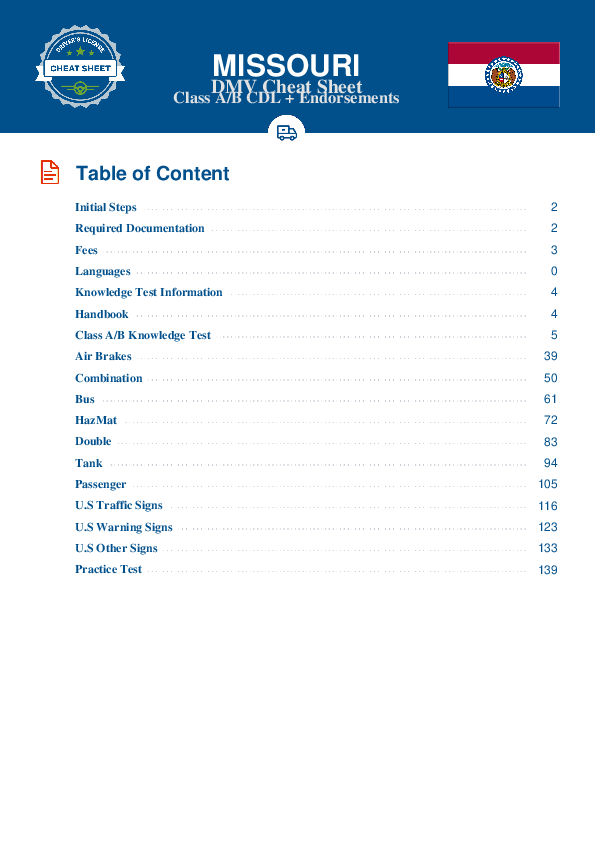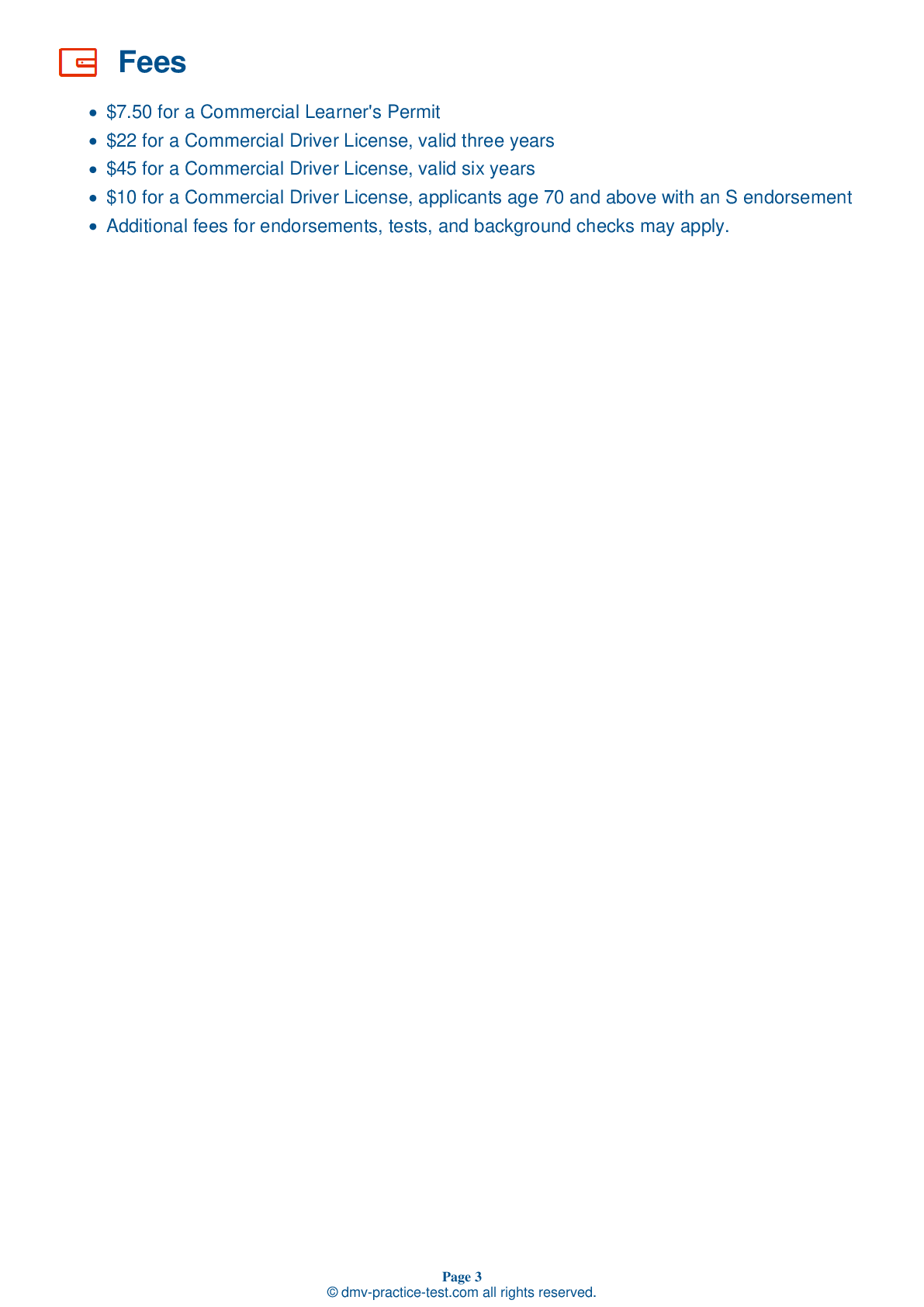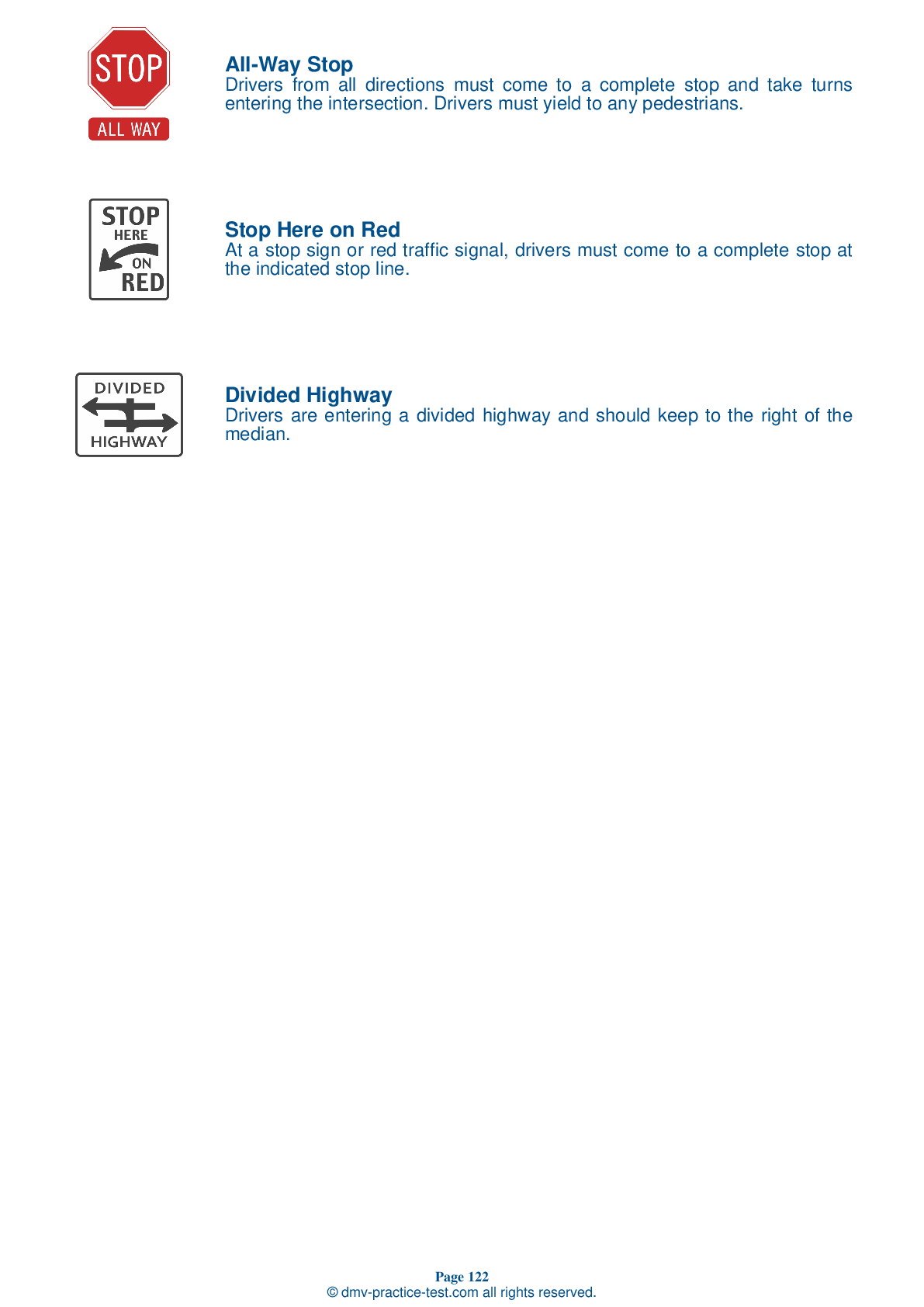Air Brakes Endorsement Test | Missouri 2025 #2 Page 4 of 4
Train for FREE online with our Missouri CDL air brake test. The official exam test consists of several obligatory parts, with all of them checking your knowledge of different blocks of road rules. If you need to obtain a MO Class A/Class B driver license in 2025, practice as much as possible. Free sample tests published on our website will help you check and improve your knowledge and boost your grades. Please bear in mind that the requirements for CDL may vary from state to state.
19 . Friction in an S-cam brake is caused when the brake shoes and linings:
Friction inside a brake drum is caused when the brake shoes and linings push against the inside of the drum. The friction in the drums will slow and stop the vehicle.
20 . Manual air tank drains should be:
Compressed air in an air brake system usually contains a certain amount of water and compressor oil. The water and oil can damage the brakes if left to accumulate in the system. Manually operated air tank drains must be opened daily to remove this build-up.
21 . A wig wag is:
Vehicles with air brakes are required to be equipped with a low pressure warning device. A wig wag is a type of low air pressure warning device. This device drops a mechanical arm into the driver's view if the pressure in the tanks drops to a level between 55 and 75 psi.
22 . Some water and compressor oil is usually found in the compressed air within an air brake system. The water and compressor oil:
If water and compressor oil are left to build up in an air brake system, the system can be damaged. Air storage tanks are equipped with drains to allow this accumulation to be removed. Manually controlled drains should be operated at the end of each day of driving.
23 . What is brake lag?
Because air takes time to flow through the air lines to the brakes, air brakes cannot begin working instantly. There is often a brake lag of at least one-half of a second between the moment the brake pedal is pressed and the moment the brakes begin to work.
24 . What does an air compressor do in an air brake system?
In an air brake system, the air compressor pumps air into the air storage tanks. The air compressor is controlled by the air compressor governor.
25 . Air storage tanks:
In an air brake system, the air storage tanks hold compressed air to be used by the brakes. The number and size of air tanks varies among vehicles.
See the exact questions that will be on the 2025 Missouri DMV exam.
99.2% of people who use the cheat sheet pass the FIRST TIME
Lillian MCcranie explains how our CDL study guide was helpful in passing the exam and recommends it to everyone.
Cameron tells us how he purchased the CDL exam, and found it to be a useful tool which helped him pass the exam and find a job.



